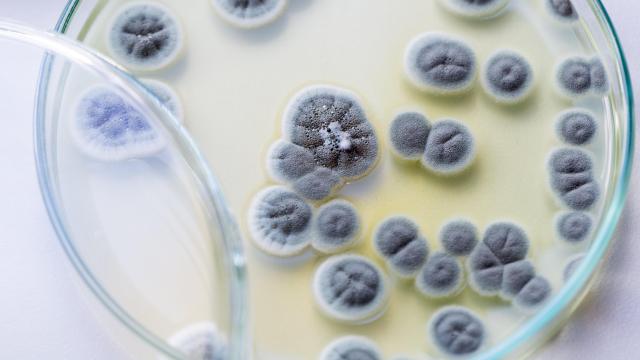People’s cancers are apparently playing host to their very own fungi. A pair of studies this week have documented the unique neighbourhoods of fungal species that can live inside our tumours. It’s possible that these microbes may even influence how cancers grow or manage to fend off certain treatments.
Dating back to the 19th century, scientists have known that bacteria and other microscopic organisms routinely live on or inside our bodies, usually without making us acutely sick. But it’s only in the past few decades that we’ve started to appreciate the importance of these microbial communities, or microbiomes, to our well-being and health. And it’s only more recently that we’ve begun to closely study the microbiomes found within cancers.
Much of the early research into these cancer microbiomes has focused on bacteria. But while fungi are less abundant in the human body, they’re still thought to play a vital role in how microbiomes influence our health. These new papers, both published Thursday in the journal Cell, are some of the first to try creating a rough map of the fungal microbiome found within our cancers.
One of these studies involved researchers from the University of California-San Diego School of Medicine as well as the Weizmann Institute of Science in Israel. Looking at more than 17,000 blood and tissue samples that were taken from cancer patients, they were able to find low amounts of fungi across 35 different types of cancer.
“The existence of fungi in most human cancers is both a surprise and to be expected,” said study author Rob Knight, a researcher and professor at UC San Diego, in a statement from the university. “It is surprising because we don’t know how fungi could get into tumours throughout the body. But it is also expected because it fits the pattern of healthy microbiomes throughout the body, including the gut, mouth and skin, where bacteria and fungi interact as part of a complex community.”
Across the different cancer types, the microbiomes had different mixes of fungal species, but there were some common trends noticed by Knight and his team. These fungi usually appeared to be intracellular, meaning that they live inside cancer cells. They also found evidence that the fungi and bacteria within these cancers commonly interact with each other, and often not in a competitive way. Perhaps more importantly, the team found associations between these fungal microbiomes and aspects of the cancer itself, such as its response to immunotherapy treatments.
The other study was led by researchers from Duke and Cornell University. This team also found plenty of fungi nestled within human cancers, with some cancers being more likely to harbour certain fungi than others. In lung cancer tumours, for instance, Blastomyces fungi were more commonly found, while Candida fungi were more common in gastrointestinal cancers. The presence of Candida fungi in particular was also linked to a lower chance of survival for patients with these cancers.
At this point, these findings only show a correlation between the fungal microbiome and cancer outcomes, not a direct cause-and-effect relationship. And while the microbiome, in general, is important to human health, we’re still very early in studying exactly how it affects us, much less how to repair a microbiome that’s become harmful. But this research will give scientists a clearer understanding of the complex biology of cancer, and perhaps someday, might allow them to create improved treatments against it.
“The finding that fungi are commonly present in human tumours should drive us to better explore their potential effects and re-examine almost everything we know about cancer through a ‘microbiome lens,’” said co-author Ravid Straussman, a principal investigator at the Weizmann Institute of Science.
